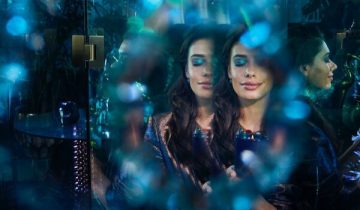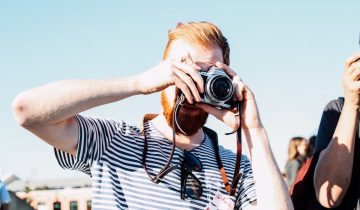written by Mariama Jallow
edited by CHIQIO
key words: design, Bea Feitler
Bea Feitler was one of the most influential magazine cover designers of her time. From Bazaar magazine to Vanity Fair, Feitler used her talent to create remarkable pieces of design. Feitler’s work commonly reflected changes within 1960s-1970s American culture, and themes of cultural reform were evident in her work. Her pieces are composed of bold neon colors, a variety of shapes, and contrast between different levels of saturation. Bea also held an affinity for music and was able to design work for music icons John Lennon and Elvis Presley. As we both share a love for music, I decided that my design should primarily encompass Feitler’s love for music and vivid color. For my project, I have made the cover art for a magazine in Feitler’s style. Rock legend David Bowie is the center of my piece, and various common components of Feitler’s designs have manifested itself in my own work. “Feitler believed in graphic design, in how the flow of images and visual energy give vital shape and form to information.” My design is about an event in 1973, during the flamboyant glam rock era. David Bowie had just announced his retirement as ‘Ziggy Stardust’, his glamorous persona.
Feitler was heavily inspired by visual artist legend, Andy Warhol, and the colors he used for his work. Bright pastels, violets, blues, and greens were used by Feitler to portray themes of youth, political change, and a new cultural landscape. Color was a significant part of the glam rock era, so I decided to use Feitler’s color palette to convey this pivotal point in music culture. I layered bright greens, pastels, and reds throughout my piece to reflect the colors commonly used in Feitler’s work. Adding these colors to the form of my design helps emphasize the magazine’s content by highlighting how creators were not afraid to make bold artistic choices during this era. Whether it was Bowie’s music or the colors Feitler used in her designs, creatives dared to transcend beyond societal norms.
I then illustrated the transition from the colorful glam rock to the forthcoming punk rock era. A manipulated photo of Bowie fades to grayscale amid vibrant colors, symbolizing the coexistence of glam and punk rock within the music industry. This design technique, inspired by Feitler’s work, uses the contrast between color and black-and-white to highlight both the background and the centerpiece. The back cover juxtaposes colorful shapes beneath Ziggy Stardust’s faded image, signifying Bowie’s enduring influence despite cultural shifts. This duality in my design, featuring both vivid and muted elements, reflects Bowie’s versatility. This signifies how Bowie’s influence in Rock continued to persist beyond 1973, despite the shift in culture. Some parts of my design hold a faded aura, to further display this idea. The variety of colors and shapes in my piece symbolizes the large portfolio of talents Bowie held and how he later adapted to the many music eras of his life.
The typography on the cover and spine draws from Feitler’s extensive portfolio, selecting fonts that resonate with the aesthetic of the magazines she frequently collaborated with. The chosen blocky, clean-edged typefaces give the cover a futuristic edge, and this adds to how the contents of the magazine theorizes about the future of glam rock and Bowie’s career. I used contrast between bright pink and red for the main title of the magazine. This embodies the main theme of my work: making bold and innovative decisions as a creative, despite the transient nature of society. Feitler was no stranger to adhering against societal conventions.
In conclusion, my design is ultimately a tribute to Feitler’s ability to make valiant graphic design choices. I ensured that her use of loud colors and inconsistent shapes were evident in my design. I resonate with her love for music and art, and choosing to gather inspiration from her has allowed me to experiment with my design capabilities.
Works Cited
Wikipedia, https://oglobo.globo.com/cultura/confira-fotos-trabalhos-de-bea-feitler-5144505. Accessed 15 March 2024.
Wikipedia, https://m.media-amazon.com/images/I/91FyNX+Z3TL._SL1500_.jpg. Accessed 15 March 2024.
Clarke, Andrew. “Inspired Design Decisions With Bea Feitler: An Unstoppable Creative Force — Smashing Magazine.” Smashing Magazine, 3 October 2019,
https://www.smashingmagazine.com/2019/10/inspired-design-decisions-bea-feitler/. Accessed 15 March 2024.
Estes, Lenora Jane. “Photos: Vanity Fair, Reborn.” Vanity Fair, 28 August 2013, https://www.vanityfair.com/culture/photos/2013/09/photos-vanity-fair-early-prototype. Accessed 15 March 2024.
Morley, Madeleine. “Bea Feitler — Riposte.” Riposte Magazine,
https://www.ripostemagazine.com/bea-feitler. Accessed 15 March 2024.


 No products in the cart.
No products in the cart.